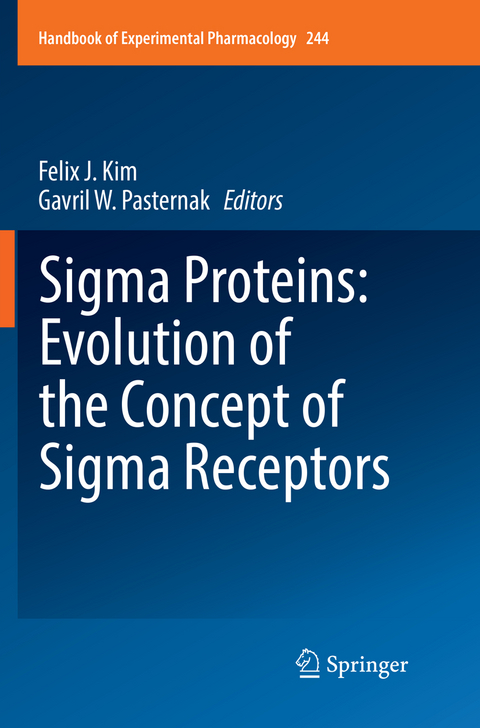
Sigma Proteins: Evolution of the Concept of Sigma Receptors
Seiten
2018
|
1. Softcover reprint of the original 1st ed. 2017
Springer International Publishing (Verlag)
978-3-319-88116-4 (ISBN)
Springer International Publishing (Verlag)
978-3-319-88116-4 (ISBN)
Two sigma receptor subtypes have been proposed, sigma1 and 2. Much of our understanding of this system is based on biochemical and pharmacological characterization of the cloned sigma1 receptor subtype (Sigma1). It has become clear that sigma receptors are not canonical receptors. Sigma1 is highly conserved among mammalian species, however, it does not share significant homology with any other mammalian protein. Although a range of structurally diverse small molecules bind Sigma1 with high affinity, and it has been associated with a broad range of signaling systems, Sigma1 itself has no known signaling or enzymatic activity. The evolution of this field over nearly four decades has more recently led to a fundamental shift in the concept of "sigma receptors" to what may more accurately and generally be called sigma proteins. Largely based on traditional pharmacologic approaches, the Sigma1 protein has been associated with a broad range of signaling systems, including G-protein coupled receptors, NMDA receptors, and ion channels. Sigma proteins have been linked to a range of physiological processes, including intracellular calcium signaling, neuroprotection, learning, memory, and cognition. Emerging genetic, clinical, and mechanism focused molecular pharmacology data demonstrate the involvement of proteins in a range of pathophysiologies and disorders including neurodegenerative disease, pain, addiction, psychomotor stimulant abuse, and cancer. However, an understanding of the physiological role of sigma proteins has remained elusive. Emerging data associate Sigma1 with chaperone-like activities or molecular scaffold functions. This book aims to provide an updated perspective on this rapidly evolving field undergoing changes in fundamental concepts of key importance to the discipline of pharmacology. It focusses on the reported roles of sigma proteins in pathophysiology and on emergent therapeutic initiatives.
Felix J Kim PhD, Drexel University, College of Medicine, Pharmacology and Physiology, Philadelphia, USAGavril Pasternak MD Ph., Memorial Sloan-Kettering Cancer Center, Anne Burnett Tandy Chair in Neurology, Molec Pharmacology and Chemistry, New York, USA
Preface.- Historical perspective and background - including Sigma protein subtypes and ligand selectivity.- Sigma imaging agents.- Medicinal chemistry.- 3-dimensional homology models of Sigma1.- Neuronal plasticity and ion channels.- Opioid receptors and other GPCR.- Cancer.- Neurodegenerative diseases.- Pain.- Cognition, learning, neurological disorders.- Drug abuse and addiction.- Alcohol Abuse.- Stroke and neuroprotection.
| Erscheint lt. Verlag | 15.8.2018 |
|---|---|
| Reihe/Serie | Handbook of Experimental Pharmacology |
| Zusatzinfo | VIII, 330 p. 64 illus., 32 illus. in color. |
| Verlagsort | Cham |
| Sprache | englisch |
| Maße | 155 x 235 mm |
| Gewicht | 522 g |
| Themenwelt | Studium ► 1. Studienabschnitt (Vorklinik) ► Physiologie |
| Studium ► 2. Studienabschnitt (Klinik) ► Humangenetik | |
| Naturwissenschaften ► Biologie ► Humanbiologie | |
| Naturwissenschaften ► Biologie ► Zoologie | |
| Schlagworte | Chaperone • Neurodegenerative Disease • Pain • pathophysiology • protein homeostasis • scaffold |
| ISBN-10 | 3-319-88116-7 / 3319881167 |
| ISBN-13 | 978-3-319-88116-4 / 9783319881164 |
| Zustand | Neuware |
| Haben Sie eine Frage zum Produkt? |
Mehr entdecken
aus dem Bereich
aus dem Bereich


